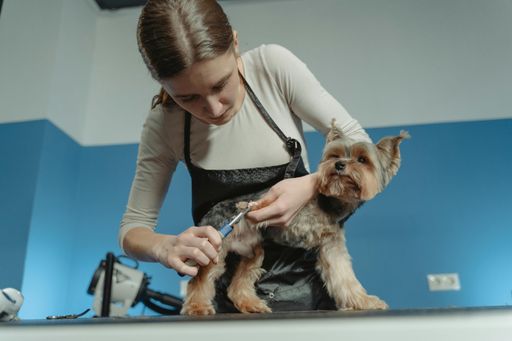An animal companion, be it a furry pup, cuddly kitty, or even a tiny hamster, can improve one's quality of life. And this is why the COVID-19 pandemic was accompanied by a marked rise in the ownership of pets, otherwise dubbed the "pet boom”.
People all over the world found solace and comfort during difficult times such as city lockdown periods by welcoming furry, four-legged friends into their homes. But sadly, the demand for pets has since cooled dramatically, with some people even giving up their recently-domesticated animals to rescue organizations and shelters.
With these events, it’s safe to say that the pet boom is, in fact, over. However, the situation is not as dire as many are claiming it to be.
The Pet Boom In the United States
The rise in pet ownership and adoption was particularly high in the U.S., and country-wide shelters and animal breeders saw a dramatic rise in demand. Cats and dogs were the most popular choice for many.
The American Society for the Prevention of Cruelty to Animals (ASPCA) reported that nearly one in five households acquired a cat or dog in 2020, accounting for approximately 23 million American households. Already an animal-loving nation, the total number of pet-owning households in the U.S. increased to over 71 million.
Demand for pet food and care services also spiked — a record $123.6 billion was spent on pet food and care in 2021, following a 2020 high of $103.6 billion.
Return to “Normal” Life
The pandemic may no longer be a disruption to our everyday life, but that doesn’t mean that things have gone back to the way they were before. Many people faced a host of post-pandemic challenges, with some relocating, changing jobs, or closing down their businesses. Even those who were not forced to upend their lives have had to contend with rising costs of living due to a looming recession and national housing crisis.
Unfortunately, a combination of these challenges and the resumption of daily schedules have led to an increase in the number of animals entering shelters across the nation compared to the number of animals leaving them—many shelters are reporting lower adoption rates as well as an influx of owner surrender requests. Some organizations also documented spikes in Google searches for terms like "sell a puppy" and "selling a dog".
No Cause For Concern
Though animal rescue organizations reported an uptick in the number of people requesting to surrender, return or re-home their pets at the start of 2021, the trend has yet to become a crisis as some had predicted.
For one, the pandemic adoption phenomenon that emerged in 2020 may have been overstated. A 2021 report from Shelter Animals Count, a national database of shelter statistics, found there were 20% fewer pet adoptions in 2020 compared to 2019, due to a smaller pool of animals available in shelters and fewer people relinquishing their pets.
Though not as reliable, data from non-shelter sources also indicated that though average animal prices shot up, the number of animals sold was not as high as expected.
Additionally, Shelter Animals Count found that U.S. shelters saw only a slight increase of 0.56% in shelter intake levels from 2020 to 2021. This was 23% lower than the number of animals returned in 2019. The Best Friends Animal Society also reported that while owner surrenders went up 82.6% in 2021 compared to 2020, they were lower than 2019 numbers by 12.5%.
Pets Are Still Providing Companionship and Comfort to Families
There may be varying information on pet returns but one thing is clear: more homes are showing love to animals and embracing them as family members.
Pet adoption rates have remained higher after the pandemic, suggesting that the trend towards pet ownership is not just a fad but a reflection of a cultural shift towards increased acceptance of companion animals.
The popularity of pet adoption has also been on the rise in emerging markets across South East/South Asia, Central Asia, Sub-Saharan Africa, and Eastern Europe.
…But There Are Compounding Challenges
Though an encouraging trend, the increased demand for animals during and after the pet boom has highlighted the dire situation that shelters and animal rescue organizations are facing.
Shelters nationwide are overcrowded due in part to a spay and neuter backlog that was created during the pandemic. In addition, there’s a shortage of veterinarians and shelter staff. Veterinary practices, from small clinics to large animal hospital chains have reported being overwhelmed in the past few years.
Takeaway: Adoption Is Still On The Rise
The pet boom may be over, but pet ownership will likely continue to see a steady rise.
What remains to be seen is the adaptations that will come up to meet the demand for healthcare and well-being services.



















